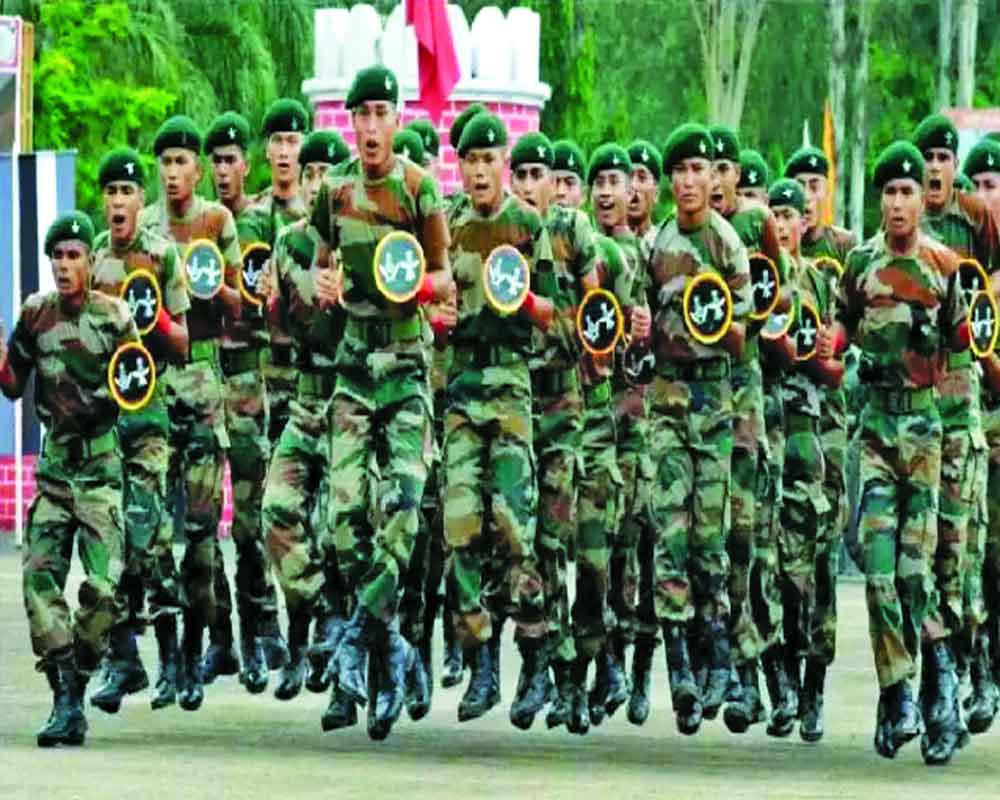Agniveer recruitments is playing havoc with the traditions of regiments in the army. The Gorkha recruitment crisis is just tip of the iceberg
Gorkha Training Centres, like other training establishments, where recruits are trained have been out of work for more than two years as recruitment was suspended due to COVID though it was possible to recruit and train with suitable precautions just as festivals, religious gatherings, election rallies, elections and so on were being held. The government took a calculated risk with manpower shortages in combat and combat support units and saved funds on recruitment, training and salaries for over two years. 60,000 soldiers become pensioners annually.The down side: operationally deployed units were deficient on average 80 to 100 men. Of course, there was a deeper plan: to rejig recruitment procedures for Agnipath though nuts and bolts had not been worked out. Some infantry battalions deployed in friction points in East Ladakh were short of roughly a company strength, that is 100 soldiers.
Agniveer has altered beyond comprehension the concept of recruitment – cross between voluntary service and conscription. With few jobs going, military has been turned into an employment avenue. Only Army Medical and Dental Corps and Electric and Mechanical Engineers have been excluded from Agnipath- a fait accompli. The political leadership which understands little about camaraderie, esprit de corps and regimental ethos unfortunately has begun to take whimsical decisions. Sadly no one including Service Chiefs had the courage to question Agnipath: they’re just so scared. Because to question today is tantamount to being anti-national.
A major problem that should have been foreseen has arisen on recruitment of Gorkhas. Nepal has shifted the onus on decision of four-year recruitment to the next government following elections on 20 November. Being a national security issue related to the 1947 Tripartite Agreement on Recruitment, more thought and discussion was needed, said the Nepalese government. Just as in India, there are few takers for Agnipath, in Nepal too. Nepal does not generate jobs for its skilled and unskilled youth. That’s why nearly one third of the country of 30mn is outside the country gainfully employed. Remittances from them, tourism and recruitment in Indian Army constitute the mainstay of the economy. Like in India, Nepal has a residual Maoist problem led by Netra Bikram Chand. Similarly a number of armed and unarmed groups are lying doggo in Madhesh. The last thing Nepal wants is hundreds of demobilized Agniveers injected into society. It is a difficult choice that the next government will have to make: whether it is KP Oli-led Unified Marxist Leninist and allies; or SB Deuba-led Nepali Congress coalition. Communists lead or are constituents of both alliances. They are known to politicize recruitment of Gorkhas into Indian Army.
There is a new self-created structural problem among Gorkha regiments. Previously 100 per cent of Gorkhas recruited hailed from Nepal. And many on retirement settled in pockets between the Chenab and Teesta rivers – the extent of the erstwhile Gorkha empire. These Gorkhas are called Indian domiciled for purposes of recruitment and their share of recruitment has gradually increased, from 30 per cent to 40 per cent, while the remaining 60 per cent comes from Nepal. In 2016, a Gorkha battalion with 100 per cent Indian domiciled Gorkhas was raised on an experimental basis . 6/1 Gorkha Rifles was unique when it was born but later, it became difficult to sustain as Indian Gorkha recruits did not meet standards, even after lowering them. The failed experiment has led to shortfall of Indian Gorkhas being met from Nepali Gorkhas. Strangely the reverse was not attempted.
This lacuna has infected other Gorkha battalions as the 40 per cent quota for Indian Gorkhas is not being met. So instead of enhancing the quota of Nepali Gorkhas from 60 to 70 per cent, in its warped wisdom, the Army let other Gorkha regiments like 1 GR, 5 GR and some others recruit Kumaonis and Garhwalis instead. 11 Gorkha Rifles,( late Gen Rawat’s Regiment) it is understood, refused to induct other "pahadis" to maintain the purity of Kiranti Gorkhas.
The government of Nepal is likely to decide by December whether it will allow Gorkhas to become Agniveers. Army Chief Gen Manoj Pandey told reporters after returning from a goodwill visit to Nepal where he was made honorary General of the Nepal Army, a historic tradition unique to India-Nepal relations, that if Nepal does not decide on time, their vacancies will be redistributed. To whom; he did not say. But it will be safe to assume Nepali domiciled vacancies could go to Indian Gorkhas, who are already stressed by standards, and/or Kumaonis and Garhwalis for which there is a precedent. If Nepal decides not to opt for Agniveer, it will pose a serious problem for the future of the seven Gorkha regiments and the Gorkha Brigade as a whole. Were this to happen, it will be a big blow to the “Gorkha connect†and India-Nepal relations. New Delhi must fire on multiple cylinders to save the integrity of Gorkha regiments and the 75-year old tradition.
CDS Gen Anil Chauhan, who is a blue-blooded 11 Gorkha officer is to shortly review Agnipath, especially the contingency if Nepal says ‘no’ to Agniveer. He will act in national interest in recommending to Prime Minister Modi who has in Nepali parliament praised Gorkhas for shedding their their blood for India’s territorial integrity to exempt the Gorkha regiments from Agnipath. This is vital for India-Nepal relations.
(The writer, a retired Lt Gen, was Commander, IPKF South, Sri Lanka, and founder member of the Defence Planning Staff, currently the Integrated Defence Staff. The views expressed are personal.)


























